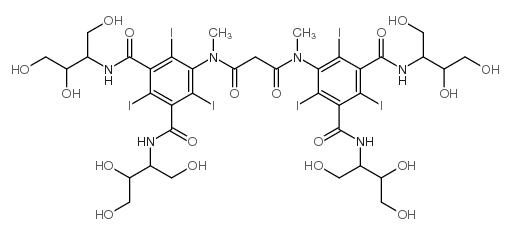[Oral administration of intravenous contrast media: a tasty alternative to conventional oral contrast media in computed tomography].
G Diederichs, T Franiel, P Asbach, V Romano, B Hamm, P Rogalla
Index: Rofo. 179(10) , 1061-7, (2007)
Full Text: HTML
Abstract
Many patients dislike oral contrast media due to their bad taste. The aim of the present study was to identify a solution that tastes better while providing the same opacification in order to offer oncological patients an alternative to the routinely used bad tasting oral contrast media.In a single blinded, prospective clinical study, the orally administered intravenous contrast media iohexol (Omnipaque), iopromide (Ultravist), and iotrolan (Isovist) as well as the oral contrast media sodium amidotrizoate (Gastrografin) and ioxithalamate (Telebrix) were each compared to the oral contrast medium lysine amidotrizoate as the reference standard at a constant dilution. The density values of all contrast media with the same dilutions were first measured in a phantom study. The patient study included 160 patients who had undergone a prior abdominal CT scan with lysine amidotrizoate within 6 months. The patients rated their subjective taste impression on a scale of 0 (very bad) to 10 (excellent). In addition, adverse events and opacification were recorded and prices were compared.The phantom study revealed identical density values. Patients assigned much higher taste impression scores of 8 and 7 to iohexol and iotrolan, respectively, as compared to a score of 3 for the conventional lysine amidotrizoate (p< 0.05). Iopromide and sodium amidotrizoate did not differ significantly from lysine amidotrizoate. The opacification of all contrast media and experienced adverse events did not differ significantly. Iotrolan (ca. 120 euro/100 ml), Iohexol and Iopromide (ca. 70 euro/100 ml) are more expensive than the conventional oral contrast media (ca. 10 - 20 euro/100 ml).Orally administered solutions of non-ionic contrast media improve patient comfort due to the better taste and provide the same opacification in comparison to conventional oral contrast media. At present, their use should be limited to individual cases due to the higher costs.
Related Compounds
| Structure | Name/CAS No. | Molecular Formula | Articles |
|---|---|---|---|
 |
Iotrolan
CAS:79770-24-4 |
C37H48I6N6O18 |
|
[Prospects of the use of non-ionic X-ray contrast media duri...
2002-01-01 [Vestn. Rentgenol. Radiol. (6) , 62-3, (2002)] |
|
Severe symptomatic aseptic chemical meningitis following mye...
2004-10-12 [Neurology 63(7) , 1311-3, (2004)] |
|
Effects of dimeric radiographic contrast medium iotrolan on ...
2004-07-01 [Invest. Radiol. 39(7) , 406-12, (2004)] |
|
A possible role for cysteinyl-leukotrienes in non-ionic cont...
2005-09-01 [Eur. J. Radiol. 55(3) , 431-6, (2005)] |
|
A new animal model for testing renal tolerance of contrast a...
2003-11-01 [Invest. Radiol. 38(11) , 704-11, (2003)] |